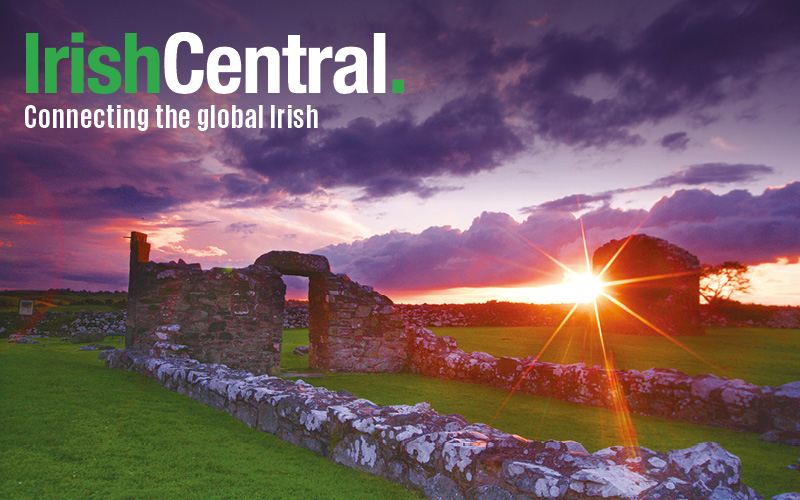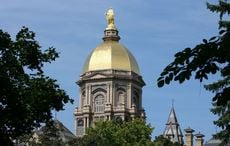Although the Irish language, or Gaelic, does not have a letter "Q", the distinctive sound of the accented "C" in some Gaelic named has caused them to be anglicized phonetically with this sound. Examples include Quinn, Quinlan, and Quigley, none of which are connected other than by their initial letter. Quinn is perhaps the most common of these names. It is derived from the Gaelic O'Cuinn meaning "descending from Conn". Since Conn was a common name, there are five separate septs of this family. They came from different parts of Tyrone, Longford, Clare and Antrim. Niall O'Cuinn was one of those killed in the Battle of Clontarf in 1014 when the Irish army of Brian Boru finally defeated the Danes. Walter Quinn (1575-1634) was a poet and tutor to the children of the English King James VI. Famous Quinns in the United States include John Quinn, New York lawyer and patron of the arts. In his support of Yeats, Joyce and Synge, he was remarkable. For many years he was the protector of J.B. Yeats, the poet's father. Quinn cared for the old man, who spent the last 15 years of his life in New York. When he died in 1922, Quinn had him buried in the family plot of a friend, Jeanne Foster, in Chestertown, New York, and paid for his headstone. Quinn was also the defense lawyer for Lady Gregory and her actors when her touring company of Synge's Playboy ran into the same sort of censorship in Philadelphia that it had in Dublin. Edmond Quinn (1868-1929) was a sculptor and painter born in Philadelphia whose works include a statue of Henry Clay presented by the U.S. to Argentina in 1930. His other works are in New York University, Metropolitan Museum of Art and other centers. There were 122 Quinns in the American Army during the War of Independence, including Major Thomas Quinn of the Virginia State Line, and Surgeon John Quinn of the 3rd Regt., New Hampshire Line. In Australia there were several Quinns notable for very different reasons. Hugh Quinn (1888-1915) was among the heroes of the Australian Gallipoli campaign, and was killed in the defense of a position known as Quinn's Post, while John Quinn (1864-1937) achieved fame for his gentler expertise in the breeding and handling of sheepdogs. He was responsible for developing the kelpie, which became a standard sheepdog used in Australia's important sheep business. Quinlan is an anglicized form of O'Caoindealbhain. In Munster the name has been anglicized in this way, or sometimes as Quinlivan or Kindellan, who was a member of Franco's cabinet. The branch of the family which settled in Tipperary took the form Quinlan. Prominent in Australia was Thomas Quinlivan (1842-1920) who was born in Clare and went to Australia in 1950. He was a farmer and inventor who in 1909 patented the "Quinlivan 4-wheel drive tractor," the original of which is in the Museum of Victoria. It was the first 4-wheel drive vehicle to be built in Australia. McQuillan. This name is a Norman name probably Gaelicized from "Son of Hugelin," which became the Gaelic form "McUighilin", and was later anglicized into McQuillan. The original Norman family were called Lords of the Route, an area in Armagh. The family estates were confiscated in 1634 and many of the family went to France and Spain where they served with distinction in the Irish Brigade and in other continental armies. Quill is derived from the Gaelic name O'Cuill and is quite unusual outside Cork, where the name originated. Maureen Quill is a member of the Irish Parliament, but perhaps the best known member of this family is the hero of the Cork ballad "The Bold Thady Quill". McQuilly is another unusual name and is associated with County Roscommon. It is often anglicized as Cox, by translation of the Irish form of the name "Mac an Choiligh," the latter part of which was thought to mean Cocks. Although Cox is a common English name, most Irish Cox families are derived from such erroneous translations of Gaelic names. Quane (also Quain, or Quan) is associated with Waterford, East Cork and East Tipperary, but is originally from Sligo. Quirke is of Munster origin, and particularly associated with Tipperary. It is derived from O'Cuirc who were rulers of an area known as Muscraighe Cuirc sometimes called Quirke's Country. The name is often anglicized as Kirk, which is a different name of Scottish origin. Quigley is derived from the Gaelic name O'Coigligh and, like others above, has been anglicized in other forms, e.g. Cogley and Twigley. James Edward Quigley (1854-1915) was born in Ontario and became a famous bishop of Chicago.




Comments